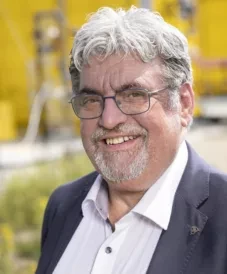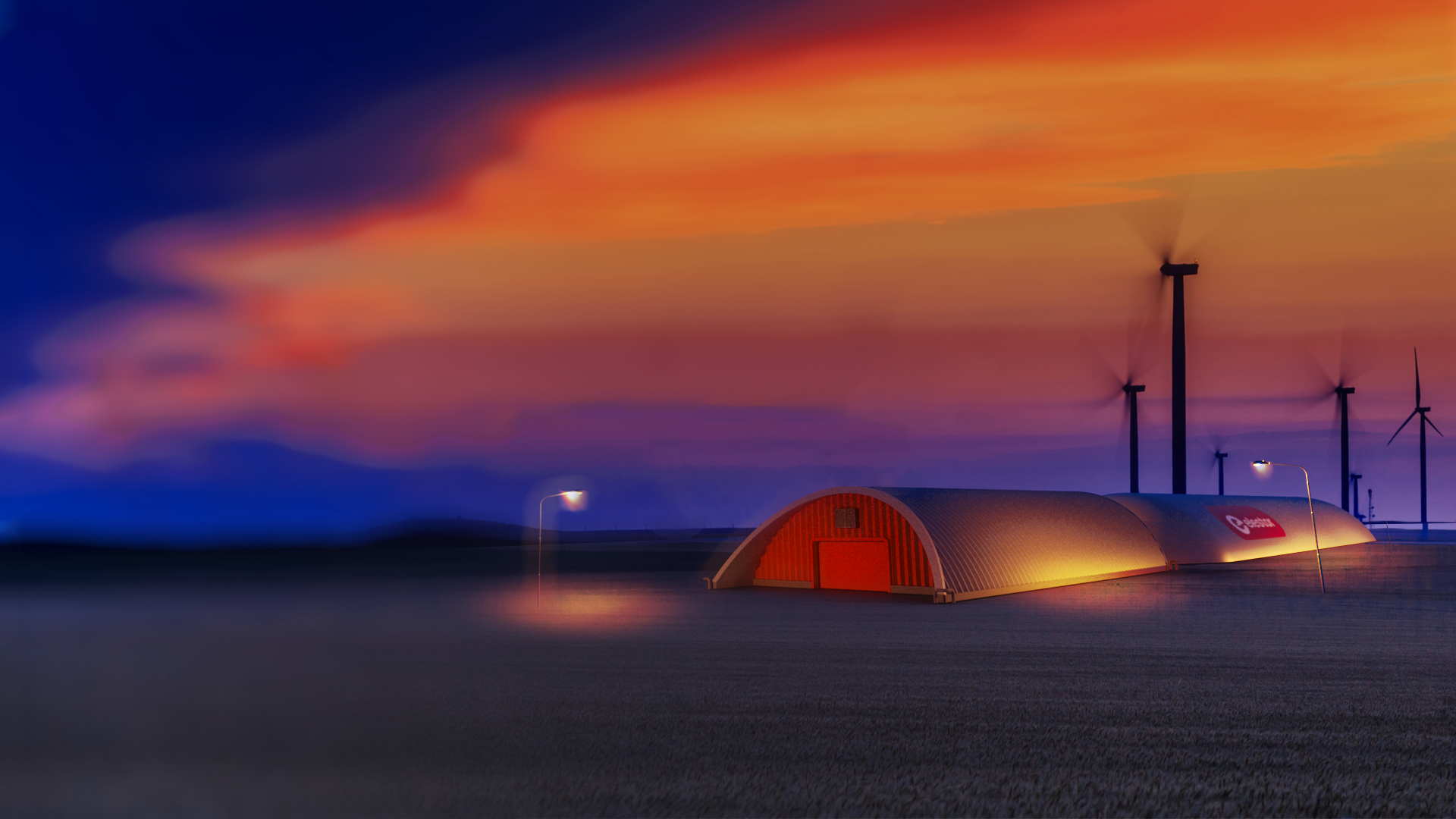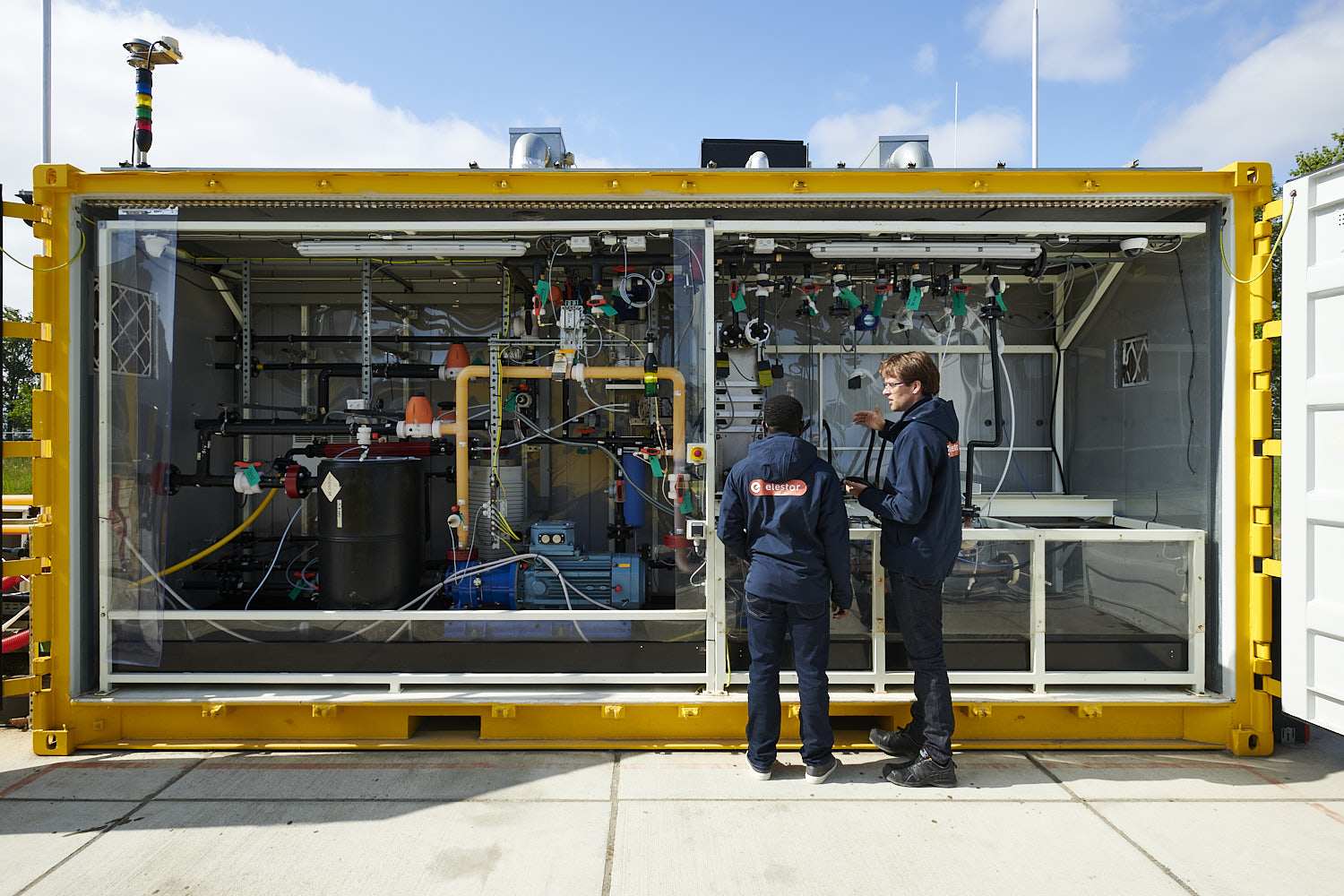
Flow batteries are considered one of the most economical options for long-duration energy storage. In an interview with Guido Dalessi, we will find out how the Dutch company uses innovative technologies to benefit from the synergy of electricity and hydrogen for its flow batteries.
Interview with Guido Dalessi, CEO of Elestor
What can be understood by a flow battery?
Flow batteries are a unique type of battery initially developed by NASA in the 1960s. However, it was not until the 1980s that they gained popularity in the industry, after demonstrating the ability to withstand over 10,000 charge/discharge cycles.
Our flow battery design is based on an electrochemical cell, where chemical energy is generated by a reaction between two active materials. In theory, a flow battery can be built using a variety of active materials, so-called redox couples. Elestor has developed several of these.
At first, Elestor developed a hydrogen-bromine chemistry concept which is still considered the holy grail of chemical compounds. Minimizing the time to market, Elestor already introduced the hydrogen and iron-sulfuric acid chemistry concept last year. We selected these chemicals to meet our goal of creating a storage system with the lowest possible storage cost per MWh.
The active materials are separated by a membrane and circulate in a closed loop, each within its own compartment. Charging the battery triggers a chemical redox reaction, discharging reverses the reaction.
Flow batteries are ideal for long-duration energy storage (LDES), as they are designed to economically deliver power for a minimum of eight hours to a few days. While other batteries can technically provide power for a similar amount of time, flow batteries are among the most cost-effective solutions for this purpose. In contrast, lithium batteries are more viable for short-duration applications. As the energy transition progresses, periods of renewable electricity shortages are becoming longer, lasting up to a several days. That’s where flow batteries come in.
Elestor’s flow battery technology can be integrated into electrolyzers and hydrogen infrastructure. How does this work?
To explain how hydrogen is integrated into our system, we need to take a closer look at the battery design: Each cell stack membrane in our storage systems has one side in contact with an aqueous solution of iron-sulfate, while the other side is in contact with a hydrogen circuit. The battery generates hydrogen during the charging process, essentially acting as an electrolyzer.
In the stand-alone battery, the generated hydrogen is stored in a separate tank, as it is required for discharging. The battery does not consume hydrogen but utilizes hydrogen and iron-sulfate as active materials for charging and discharging. When the battery is discharged, the hydrogen becomes part of the electrolyte again.
Rather than storing hydrogen in a large tank, we can connect the battery to a hydrogen pipeline. In this case, the battery feeds hydrogen into the pipeline when charging and extracts the same amount of hydrogen from the pipeline when discharging. This approach reduces both space requirements and capex, which in turn reduces the storage costs per MWh.
Does that mean you are competing with the hydrogen industry?
On the contrary, we support the hydrogen industry by maximizing the utilization of electrolyzers. Our flow battery can significantly reduce the cost of green hydrogen production when integrated with electrolyzers. By supplying the electrolyzer with low-cost electricity, we help ensure a cost-effective 24/7 hydrogen production. This effectively bridges the perceived divide between the hydrogen and electricity infrastructures, which are often viewed as competing solutions rather than complementary parts of a unified system.
Are there other companies with the same or similar technologies?
As far as I know, we are the only company using this specific chemical compound of hydrogen and iron-sulfate. Our approach to integrating our flow battery with electrolyzers and connecting to pipelines is particularly unique.
How does your technology reduce electricity storage costs?
The best time to charge the battery is when electricity prices are low, and discharge when the prices rise. The difference between these prices determines the margin per megawatt-hour. However, it is also essential to consider the storage costs for each megawatt-hour held in the battery – the lower this cost, the better the margin.
Here is an example of how the choice of chemicals affects storage costs as well: Many other flow battery manufacturers use vanadium as an active material. While vanadium-based batteries have been on the market for about a decade and are highly reliable, the chemical is unfortunately expensive and its sources are limited.
In contrast, iron-sulfate is abundant worldwide and is one of the most widely used chemicals in the industry. This widespread availability ensures that there will be no shortages or economic dependencies, keeping prices consistently low, even in the future.
What markets are you focusing on?
Although we are based in the Netherlands, our primary focus extends beyond its borders, as we seek opportunities that better match our goals. Additionally, the new right-wing government does not support the energy transition strongly enough. There are other European countries where our flow battery technology is likely to gain more traction than in the Netherlands.
To identify our best markets for adopting our flow technology, we conducted a detailed analysis of all European countries, evaluating over ten factors that influence how quickly this technology could be adopted by them. Right now, our top markets are the UK, Spain, Italy, and Germany, where we see the most immediate potential.
Storage capacity will continue to increase and eventually last several days. With the ongoing advancements in our flow batteries, we are committed to helping accelerate the energy transition.
Elestor is an exhibitor in the ees Innovation Hub at The smarter E Europe, Hall B0, booth number B0.121.

With € 30 million, the SLDBatt project in the context of the Growth Fund Material Independence & Circular Batteries is the largest R&D project into battery technology for long-term storage of sustainably generated electricity in the Netherlands
Minister Hermans with SLDBatt consortium representatives at IEA Energy Storage Symposium in Rotterdam (credits: Mathias de Graag / RVO)
Read more
Elestor’s Hydrogen-Iron Flow Batteries: Powering Europe’s Resilient and Sovereign Energy Future
In its Innovation News Network article from 15 July 2025, Elestor illustrates how its hydrogen‑iron flow batteries can deliver long‑duration, modular energy storage to bolster Europe’s grid stability and strategic autonomy. The story highlights the team’s use of abundant, safe materials and regulatory-aligned design to ensure rapid deployment at scale.
Read more
Permissible technology
Why we find it easy to gain approval for our hydrogen-iron flow battery from both regulators and the general public
Read more
